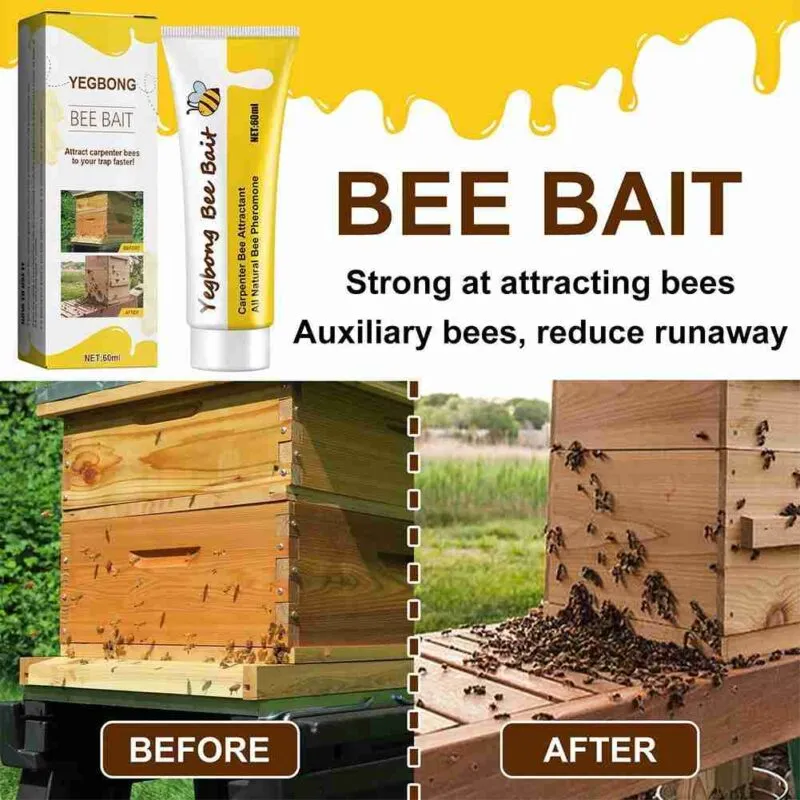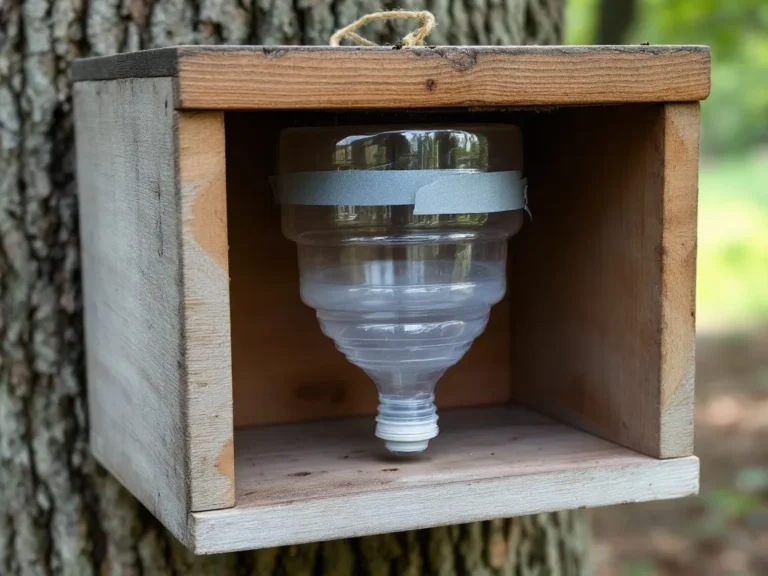Finding small, round holes in your wooden deck or fence can be alarming, often indicating the presence of carpenter bees. These bees can cause considerable damage as they tunnel into wood to create their nests. While there are various methods to combat these pests, making your own carpenter bee bait is an effective and natural solution. This guide will walk you through an easy-to-follow carpenter bee bait recipe, helping you safeguard your wooden structures and maintain a bee-free environment.
Why Use Carpenter Bee Bait?
Using bait is an effective, eco-friendly way to manage carpenter bees. Unlike chemical insecticides, baiting doesn’t introduce toxins into your environment. Additionally, it targets the bees more precisely, reducing collateral damage to other beneficial insects.
Ingredients for Carpenter Bee Bait
Creating an effective carpenter bee bait involves understanding what attracts these insects. Carpenter bees are drawn to scents and flavors that mimic natural conditions. Here’s a list of common ingredients used in homemade baits:
- Sugar: A key attractant for many insects, including carpenter bees.
- Vinegar: Helps to create a strong, enticing scent.
- Water: Used to dissolve and mix other ingredients.
- Essential Oils: Certain oils, like lemon or lavender, can attract bees.
- Flour or Cornmeal: Adds bulk to the bait and helps it stick to surfaces.
Carpenter Bee Bait Recipe
Basic Recipe
Ingredients:
- 1 cup of water
- 1/4 cup of sugar
- 1/4 cup of vinegar
- 1 tablespoon of lemon essential oil (or lavender essential oil)
- 1/4 cup of flour or cornmeal
Instructions:
- Mix the Water, Sugar, and Vinegar: In a medium bowl, combine the water, sugar, and vinegar. Stir until the sugar is fully dissolved.
- Add Essential Oil: Add the lemon or lavender essential oil to the mixture. These scents are particularly attractive to carpenter bees.
- Incorporate Flour or Cornmeal: Gradually add the flour or cornmeal to the mixture, stirring continuously to avoid lumps. The flour helps the bait adhere better to surfaces.
- Store the Mixture: Transfer the bait into a sealable container. Store it in a cool, dry place until ready to use.
Application Tips
- Select the Right Location: Apply the bait near areas where you’ve noticed carpenter bee activity, such as wooden decks, eaves, or fences. Look for existing holes or nesting sites.
- Use Traps: Place the bait in carpenter bee traps or apply it directly to wooden surfaces. Traps can be purchased or homemade, typically consisting of a wooden box with holes that mimic natural nesting sites.
- Monitor Regularly: Check the baited areas and traps regularly to ensure they are working effectively. Reapply the bait as needed, especially after rain or strong winds.
- Seal Holes: After successfully trapping and removing the bees, seal any holes or tunnels with wood putty or caulk to prevent re-infestation.
Alternative Bait Ingredients
While the basic recipe is effective, you can experiment with other ingredients to improve efficacy or address specific needs:
- Honey: Adding a small amount of honey can increase the bait’s attractiveness.
- Fruit Extracts: Natural fruit extracts like apple or banana can enhance the scent.
- Fermented Mixtures: Some beekeepers use a mixture of sugar, water, and yeast to create a fermenting bait that attracts bees.
Preventive Measures
While baiting is a useful tool, combining it with preventive measures can significantly reduce the likelihood of carpenter bee infestations:
- Paint or Varnish Wood: Carpenter bees prefer untreated wood, so painting or varnishing exposed surfaces can deter them.
- Use Hardwood: Opt for hardwoods like oak or maple for construction, as they are less attractive to carpenter bees.
- Regular Inspections: Periodically inspect wooden structures for signs of bee activity and take action early.
Final Toughts
Creating your own carpenter bee bait is a practical and eco-friendly solution to managing these wood-damaging pests. With a few simple ingredients, you can craft an effective bait that attracts and traps carpenter bees, protecting your wooden structures from damage. Combine baiting with preventive measures for a comprehensive approach to carpenter bee control. By staying vigilant and proactive, you can enjoy a bee-free home and garden.
FAQs
1. How often should I reapply carpenter bee bait? Reapply the bait every two weeks or after heavy rain to maintain its effectiveness.
2. Can I use the bait indoors? It’s best to use the bait outdoors, as carpenter bees typically nest in exterior wood. If you notice indoor activity, it might be best to consult a professional.
3. What should I do if the bait doesn’t seem to work? If the bait isn’t attracting bees, try adjusting the ingredients or placement. Ensure the bait is fresh and positioned near active nesting sites.
4. Is carpenter bee bait safe for pets and children? While the bait is less toxic than chemical insecticides, keep it out of reach of pets and children to avoid accidental ingestion.
5. Can I use other essential oils in the bait? Yes, you can experiment with other essential oils like eucalyptus or tea tree oil to see what works best in attracting carpenter bees.





